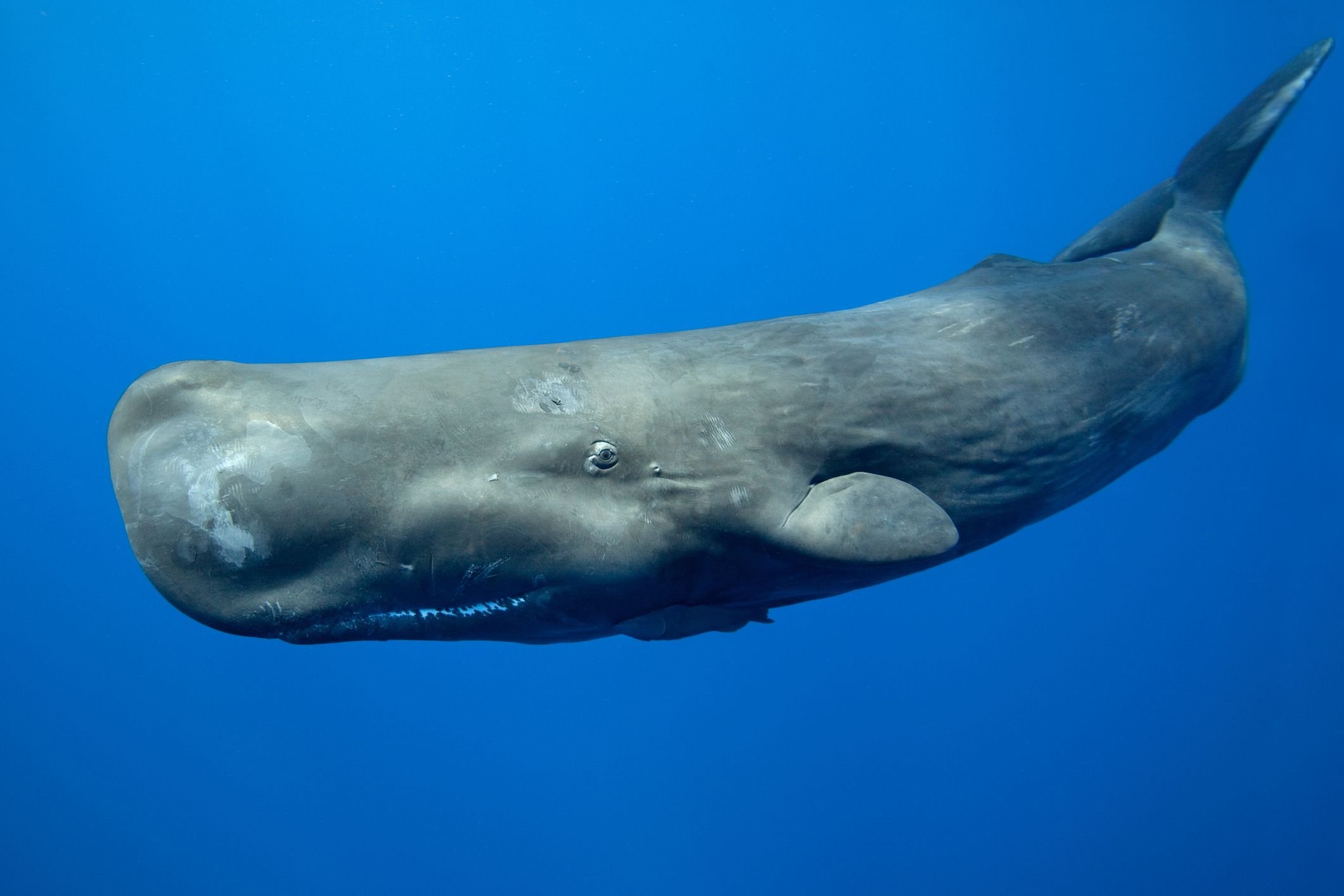Sperm Whale
Sperm whales are the world’s largest predator 🐋
Sperm whales are the world’s largest predator, with males reaching lengths of up to 67 feet (20.5 meters) and weights of up to 90 tons (81 metric tons). Females are slightly smaller, reaching lengths of up to 33 feet (10 meters). Sperm whales are found in all the world’s oceans, but prefer deep waters.
These giant whales dive down to almost 3000m below the surface where they hunt giant squid. Giant squid can be the same size or bigger than sperm whales and will fight viciously with them. Adult whales can be seen with scars on their heads from the beaks of giant squid.
Their diet consists mainly of squid, but they also eat fish, crabs, and other small creatures. Sperm whales hunt using echolocation, sending out clicks that bounce off objects and allow them to determine the object’s location, size, and shape.
Sperm whales are social creatures, living in groups of up to 50 individuals. These groups are made up of females and their young, with the males living in separate groups. Males reach maturity at around 15 years of age, at which point they leave their natal group and join a group of other males.
Sperm whales are long-lived creatures, with a lifespan of up to 70 years. They are also one of the few animals that can communicate using clicks, whistles, and other sounds.
Sperm whales are at risk from a number of threats, including hunting, pollution, and entanglement in fishing gear. Hunting of sperm whales was once widespread, but has now been banned in most countries. Despite this, illegal hunting still occurs, and the sperm whale population has declined significantly.
Conservation efforts are underway to protect these magnificent creatures, and help ensure that they remain a part of our world for generations to come.





